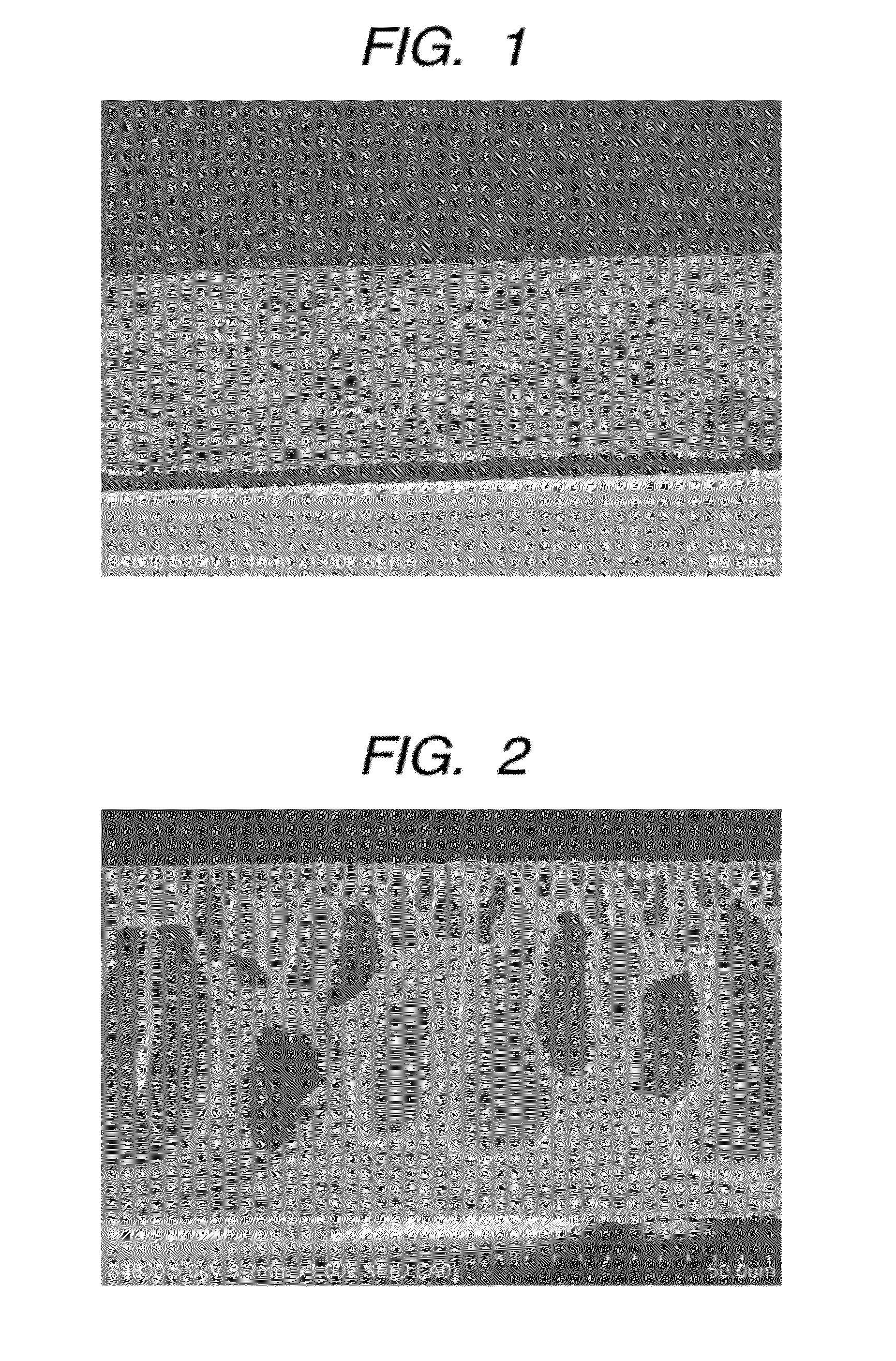Method of producing porous polymer film and porous polymer film produced by the method
- Summary
- Abstract
- Description
- Claims
- Application Information
AI Technical Summary
Benefits of technology
Problems solved by technology
Method used
Image
Examples
example 1
[0052]A coating film having a thickness of 0.3 mm was prepared by using a polyimide sheet having a thickness of 128 μm as a substrate and a polymer solution 1 (U-Varnish A, manufactured by Ube Industries, Ltd., an 18-wt % polyamic acid-NMP solution, SP value of NMP: 22.4, volume fraction of NMP: 86 vol %). The coating film was covered with a solvent absorption sheet 1 (MF-membrane, manufactured by Nihon Millipore K.K., thickness: 90 μm) formed of cellulose nitrate (SP value: 22.1) and cellulose acetate (SP value: 22.8) having an area enough to cover an entire surface on the film at room temperature, and then the solvent was absorbed and removed for 30 minutes. After that, the above-mentioned sheet in a state of being covered with the solvent absorption sheet was immersed in water so that the coating film might be made porous.
[0053]The above-mentioned sheet was taken out of water, and the solvent absorption sheet was peeled from the coating film. The coating film on the substrate whi...
example 2
[0055]A porous polymer film was prepared in the same manner as in Example 1 with the exception that a solvent absorption sheet with which the coating film was covered was a solvent absorption sheet 2 (Nitrocellulose Membrane 1, manufactured by Nihon Millipore K.K., thickness: 155 μm) formed of cellulose nitrate. The resultant porous polymer film had a porosity of 31%. The kind of the solvent absorption sheet of Example 2 was substantially identical to that of Example 1, and the control of a reduction in porosity was attained by increasing the thickness of the sheet.
example 3
[0056]A porous polymer film was prepared in the same manner as in Example 1 with the exception that a solvent absorption sheet with which the coating film was covered was a solvent absorption sheet 3 (SI-50, manufactured by Nihon Millipore K.K., thickness: 144 μm) formed of cellulose nitrate and cellulose acetate. The resultant porous polymer film had a porosity of 45%. Although, the kind of the solvent absorption sheet of Example 3 was not exactly identical to that of Example 1, the porosity was controlled to be low by increasing the thickness of the sheet.
PUM
| Property | Measurement | Unit |
|---|---|---|
| Fraction | aaaaa | aaaaa |
| Porosity | aaaaa | aaaaa |
| Porosity | aaaaa | aaaaa |
Abstract
Description
Claims
Application Information
 Login to View More
Login to View More - R&D
- Intellectual Property
- Life Sciences
- Materials
- Tech Scout
- Unparalleled Data Quality
- Higher Quality Content
- 60% Fewer Hallucinations
Browse by: Latest US Patents, China's latest patents, Technical Efficacy Thesaurus, Application Domain, Technology Topic, Popular Technical Reports.
© 2025 PatSnap. All rights reserved.Legal|Privacy policy|Modern Slavery Act Transparency Statement|Sitemap|About US| Contact US: help@patsnap.com

